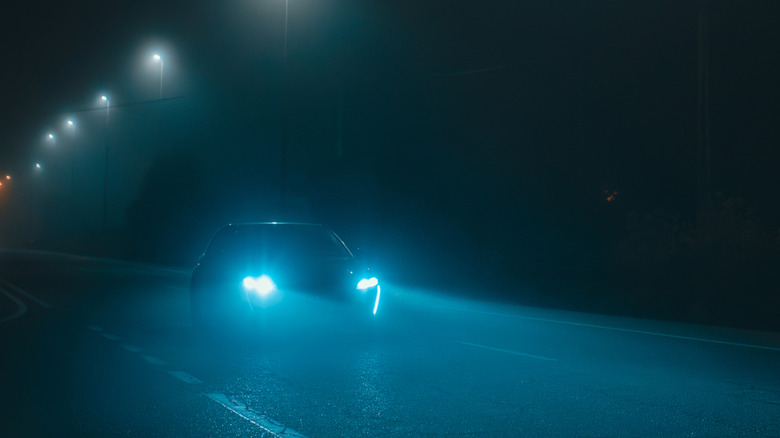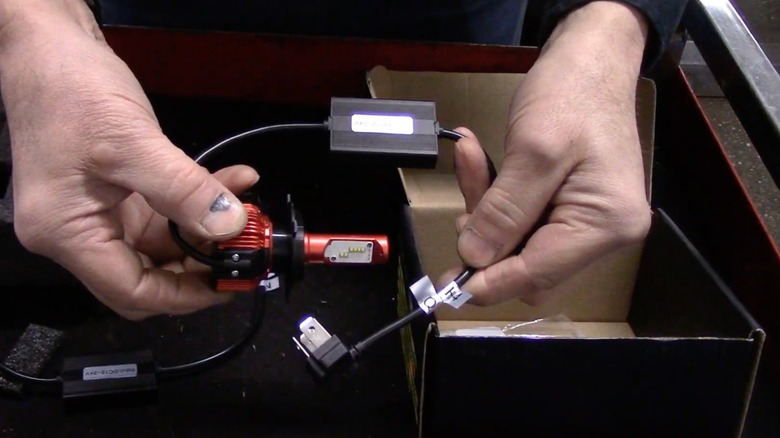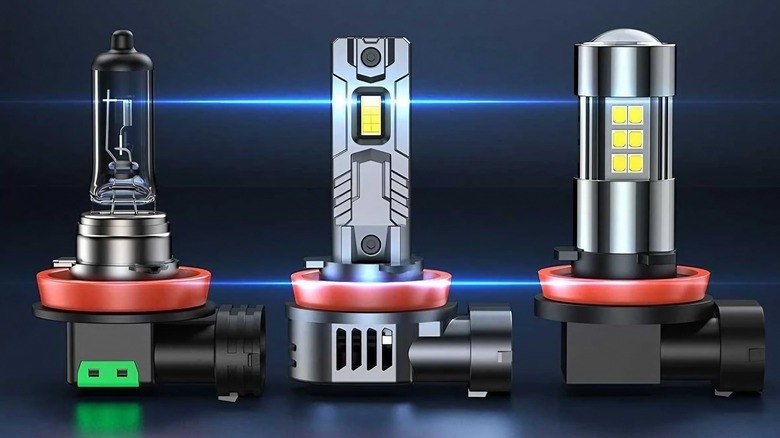Can You Put LED Bulbs In Halogen Headlights?
We may receive a commission on purchases made from links.
Over the last decade, LED headlights have made their way from luxury models to everyday cars — and for good reason. Traditional halogen bulbs, the long-time standard, just can't keep up in terms of performance, efficiency, or longevity. Halogens give off that dull, yellowish light that doesn't cut as well through more extreme conditions like dense fog. Compare that to LED beams' brighter and crisper output that arguably better resembles actual daylight.
Plus, with LEDs boasting lifespans of up to 30,000 hours compared to halogen's 500 to 1,000, the long-term value is hard to ignore. They also use less energy, which results in less strain on the car's electrical system.
Carmakers have been quick to catch on. As of the mid-2020s, many new vehicles come standard with LED headlights, and many more offer them as premium upgrades. Of course, beyond the aforementioned advantages, it's also got a lot to do with aesthetics. LEDs simply go better with the futurism that car manufacturers have been pursuing with their designs. With so many advantages, it's no wonder many drivers are considering making the switch.
Give your old car a new lease of life with LEDs
Most vehicles equipped with halogen headlights can be upgraded to LEDs with the right conversion kit. These kits are relatively inexpensive and are designed to make LED upgrades widely accessible, so the process is usually pretty DIY-friendly with no custom wiring or expert mechanic needed. However, it's important to confirm that any upgrade complies with local vehicle lighting laws, as LED bulbs installed in halogen housings may not be street-legal in all areas.
Once confirmed, the steps are relatively simple. First, figure out your vehicle's headlight bulb size (H11, 9005, 9006, etc.). This info is in your owner's manual or can be found using online fitment guides. Then, purchase an LED conversion kit that matches. Brands like Sealight, Fahren, and Sylvania all offer high-quality kits designed to be plug-and-play in markets like the US. That means you remove the halogen bulbs, plug in the LEDs, secure them in place, and you're done.
Most kits include the LED bulbs themselves, an integrated or external driver to manage voltage, and a cooling system (like a built-in fan or aluminum heat sink). As for pricing, they typically range from $90 to $300.
Massive improvements to the driving experience at night
Once installed, you'll see a major difference right away. Compared to halogen bulbs, LEDs provide significantly brighter output and a whiter, more daylight-like beam. Drivers also often report better peripheral visibility and a drop in fatigue during nighttime drives, at least as long as other cars aren't shining beams into their faces.
Just keep in mind that not all LED kits are created equal before getting one. Budget kits under $70 (often from unknown brands on Amazon) can be tempting, but they may come with trade-offs — short lifespans, overheating issues, scattered beam patterns that can blind oncoming traffic, and poor overall durability. For best results, stick to well-reviewed options.
For those seeking absolute perfection, retrofitting your entire headlight assembly with LED-specific housings is also an option. It's pricier (think $400–$2,000) and would require a mechanic, but if you drive a lot at night, it could be worth it. Some aftermarket assemblies even feature halo rings or sequential turn signals for more style.
The bottom line is that upgrading from halogen to LED is one of the smartest, most cost-effective upgrades you can make for your car. Just make sure your new beams don't blind oncoming drivers — those ultra-bright LEDs can cause serious glare if they're not properly aimed.


